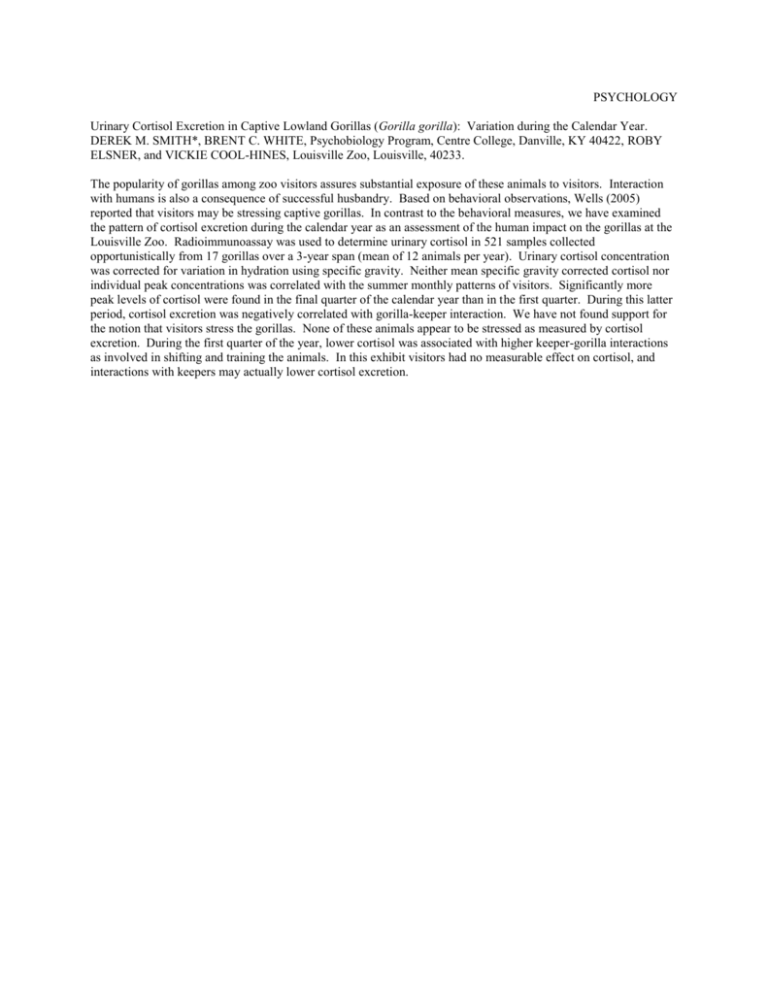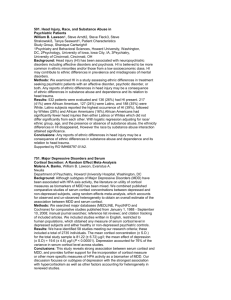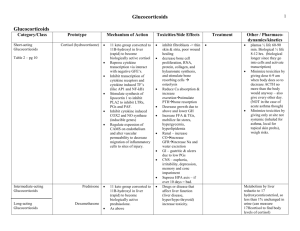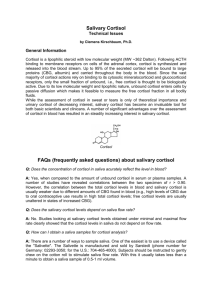Urinary Cortisol Excretion in Captive Lowland Gorillas (Gorilla
advertisement

PSYCHOLOGY Urinary Cortisol Excretion in Captive Lowland Gorillas (Gorilla gorilla): Variation during the Calendar Year. DEREK M. SMITH*, BRENT C. WHITE, Psychobiology Program, Centre College, Danville, KY 40422, ROBY ELSNER, and VICKIE COOL-HINES, Louisville Zoo, Louisville, 40233. The popularity of gorillas among zoo visitors assures substantial exposure of these animals to visitors. Interaction with humans is also a consequence of successful husbandry. Based on behavioral observations, Wells (2005) reported that visitors may be stressing captive gorillas. In contrast to the behavioral measures, we have examined the pattern of cortisol excretion during the calendar year as an assessment of the human impact on the gorillas at the Louisville Zoo. Radioimmunoassay was used to determine urinary cortisol in 521 samples collected opportunistically from 17 gorillas over a 3-year span (mean of 12 animals per year). Urinary cortisol concentration was corrected for variation in hydration using specific gravity. Neither mean specific gravity corrected cortisol nor individual peak concentrations was correlated with the summer monthly patterns of visitors. Significantly more peak levels of cortisol were found in the final quarter of the calendar year than in the first quarter. During this latter period, cortisol excretion was negatively correlated with gorilla-keeper interaction. We have not found support for the notion that visitors stress the gorillas. None of these animals appear to be stressed as measured by cortisol excretion. During the first quarter of the year, lower cortisol was associated with higher keeper-gorilla interactions as involved in shifting and training the animals. In this exhibit visitors had no measurable effect on cortisol, and interactions with keepers may actually lower cortisol excretion.











